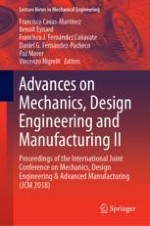2019 | OriginalPaper | Buchkapitel
Geometry Modelling of Regular Scaffolds for Bone Tissue Engineering: A Computational Mechanobiological Approach
verfasst von : A. Boccaccio, M. Fiorentino, M. Gattullo, V. M. Manghisi, G. Monno, A. E. Uva
Erschienen in: Advances on Mechanics, Design Engineering and Manufacturing II
Aktivieren Sie unsere intelligente Suche, um passende Fachinhalte oder Patente zu finden.
Wählen Sie Textabschnitte aus um mit Künstlicher Intelligenz passenden Patente zu finden. powered by
Markieren Sie Textabschnitte, um KI-gestützt weitere passende Inhalte zu finden. powered by
